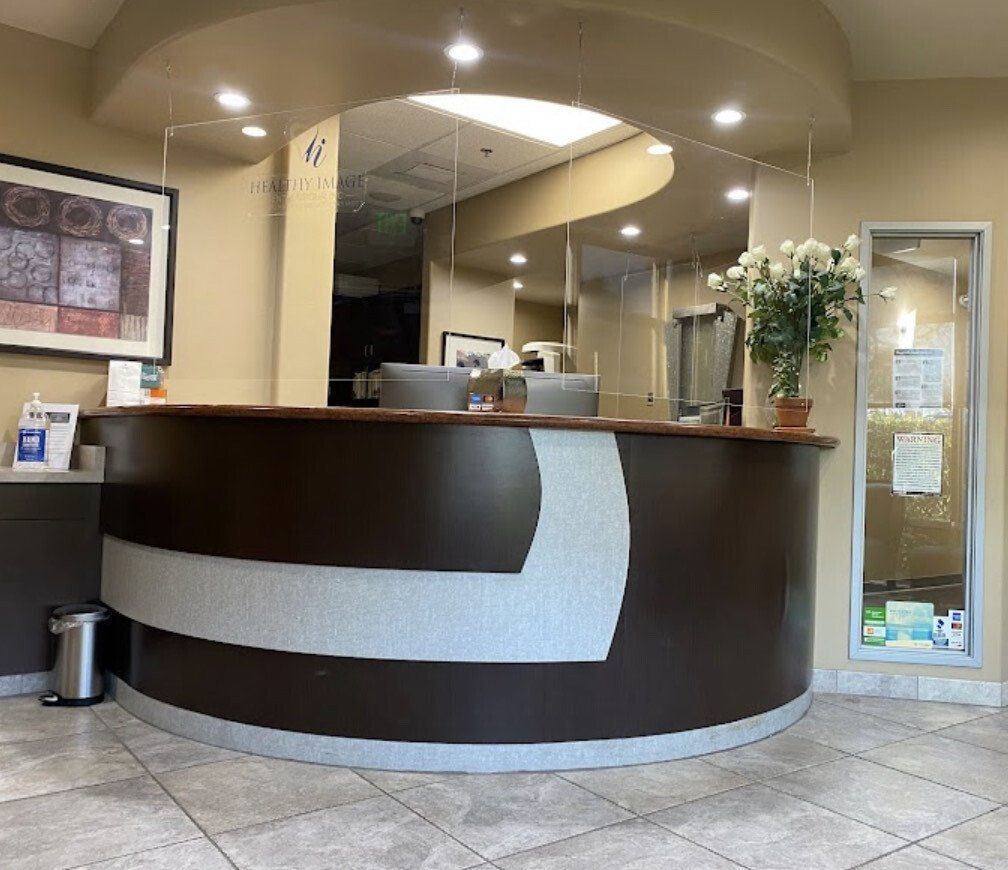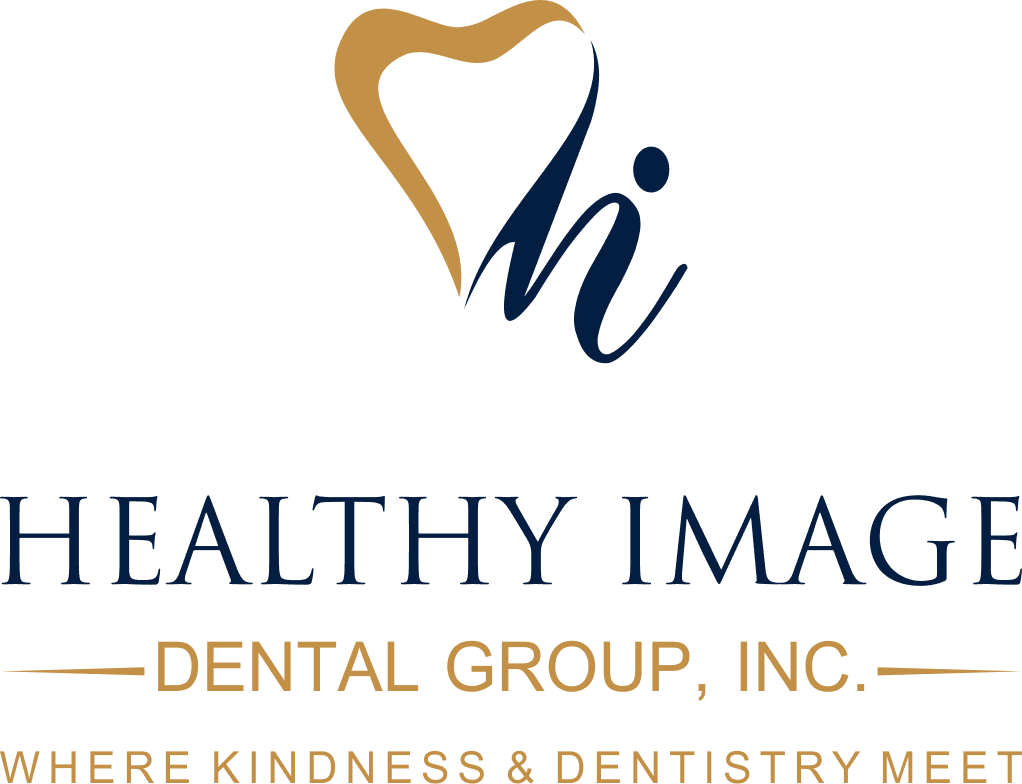Oral & Maxillofacial Surgery
Wisdom Teeth Extractions
Third molars, commonly referred to as wisdom teeth, are usually the last four of 32 teeth to erupt (surface) in the mouth, generally making their appearance between the ages of 17 to 25. They are located at the back of the mouth (top and bottom), near the entrance to the throat. The term “wisdom” stems from the idea that the molars surface at a time typically associated with increased maturity or “wisdom”.
In most cases, inadequate space in the mouth does not allow the wisdom teeth to erupt properly and become fully functional. When this happens, the tooth can become impacted (stuck) in an undesirable or potentially harmful position. If left untreated, impacted wisdom teeth can contribute to infection, damage to other teeth, and possibly cysts or tumors.
There are several types, or degrees, of impaction based on the actual depth of the teeth within the jaw:
Soft Tissue Impaction: The upper portion of the tooth (the crown) has penetrated through the bone, but the gingiva (gum) is covering part or all of the tooth’s crown and has not positioned properly around the tooth. Because it is difficult to keep the area clean, food can become trapped below the gum and cause an infection and/or tooth decay, resulting in pain and swelling.
Partial Bony Impaction: The tooth has partially erupted, but a portion of the crown remains submerged below the gum and surrounding jawbone. Again, because it is difficult to keep the area clean, infection will commonly occur.
Complete Bony Impaction: The tooth is completely encased by jawbone. This will require more complex removal techniques.
Reasons for removal of wisdom teeth
While not all wisdom teeth require removal, wisdom teeth extractions are most often performed because of an active problem such as pain, swelling, decay or infection, or as a preventative measure to avoid serious problems in the future. If impaction of one or more wisdom teeth is present, and left untreated, a number of potentially harmful outcomes can occur, including:
• Damage to nearby teeth: Second molars (the teeth directly in front of the wisdom teeth) can be adversely affected by impacted wisdom teeth, resulting in tooth decay (cavities), periodontal disease (gum disease) and possible bone loss.
• Disease: Although uncommon, cysts and tumors can occur in the areas surrounding impacted wisdom teeth.
• Infection: Bacteria and food can become trapped under the gum tissue, resulting in an infection. The infection can cause considerable pain and danger.
• Tooth Crowding: It has been theorized that impacted wisdom teeth can put pressure on other teeth and cause them to become misaligned (crowded or twisted). This theory isn’t universally accepted by all dental professionals, and it has never been validated by any scientific studies.
Wisdom teeth examination
As with any dental procedure, your dentist will want to initially conduct a thorough examination of the wisdom and surrounding teeth. Panoramic or digital x-rays will be taken in order for your dentist to evaluate the position of the wisdom teeth and determine if a current problem exists, or the likelihood of any potential future problems. The x-rays can also expose additional risk factors, such as deterioration or decay of nearby teeth. Early evaluation and treatment (typically in the mid-teen years) is recommended in order to identify potential problems and to improve the results for patients requiring wisdom teeth extractions. Only after a thorough examination can your dentist provide you with the best options for your particular case.
What does the removal of wisdom teeth involve?
Wisdom teeth removal is a common procedure, generally performed under local anesthesia, intravenous (IV) sedation, or general anesthesia by a specially trained dentist in an office surgery suite. The surgery does not require an overnight stay, and you will be released with post-operative instructions and medication (if necessary), to help manage any swelling or discomfort.
Sleep Apnea
Obstructive sleep apnea, the most common form of the disorder, occurs when the soft tissues at the back of the throat collapse and block the airway during sleep, according to WebMD. The second form, central sleep apnea, occurs when the brain does not signal the muscles to breathe.
Solution...... Oral Appliance.
Worn only during sleep, an oral appliance fits like a sports mouth guard or an orthodontic retainer. It supports the jaw in a forward position to help maintain an open upper airway. Research shows that oral appliance therapy is an effective treatment option for snoring and obstructive sleep apnea.
Come visit us at Healthy Image Dental Group, Inc. takes some custom impressions, and within a couple weeks your oral device will be ready. Have a custom made dental device that is specifically designed to treat your sleep apnea, and reduce/eliminate snoring.
Sleep Apnea Symptoms
• Snoring
• Weight Gain
• Short Term Memory Problems
• Tiredness
• Diabetes
• Depression
• High Blood Pressure
• Sore Throat
• Gastric Reflux
• Dry Mouth
• Slow Metabolism
• Inability to Lose Weight
Sleep Apnea Appliances
Sleep apnea is a serious, sometimes fatal medical disorder that affects around 10% of American men over the age of 40, and 6% of American women of the same age. Sleep apnea sufferers completely stop breathing during sleep, sometimes hundreds of times in a single night. Normal breathing ceases because the airway becomes obstructed, causing a serious reduction of airflow to the lungs.
There are a number of dental devices that can be used to alleviate this condition. The goal of most of these devices is to separate the jaws and push them forward slightly. This slight repositioning opens up the airway, and allows oxygen to flow freely again. Wearers of sleep apnea dental devices report that they stop loud snoring, feel more rested in the daytime, and are much more comfortable going to sleep. Sleep apnea appliances work best on patients who are not significantly overweight. They offer a viable alternative to Continuous Positive Airway Pressure (CPAP).
Sleep apnea appliances fall into two categories: fixed and adjustable. Here are brief descriptions of some commonly used sleep apnea dental appliances:
TAP® 3 (Thornton Adjustable Positioner)
The TAP® 3 is the smallest, most comfortable member of the TAP family. It is a two-part custom-created sleep apnea appliance that fits over the teeth in much the same way as a sports mouth guard. The TAP® 3 projects the jaw forward to prevent the tongue and soft tissues from impeding the airway. The lower jaw positioner is adjustable, which means that it can be altered to suit the comfort level of the wearer. The TAP® 3 appliance can accommodate the three main types of malocclusion, and allows the lips to fully close.
OASYS Appliance
The OASYS appliance is designed to move the base of the tongue toward the front of the mouth by gently repositioning the jawbone (mandible). This shift opens the oropharynx and strengthens the upper airway. An extension of the upper shield projects toward the nose, creating a larger nasal opening and less resistance to normal airflow. This adjustable appliance is comfortable to wear and extremely patient friendly.
KlearwayTM Appliance
The KlearwayTM Appliance is generally used to alleviate obstructive sleep disorder and eliminate snoring. The patient or dentist can project the jaw forwards in increments of .25mm at a time. This ensures maximum comfort for the sleeper. The KlearwayTM appliance is made from VariflexTMheat softening acrylic, which makes it easier to insert. Running warm water over the appliance makes it pliable, but once placed in the desired position, the acrylic hardens again.
Herbst Telescopic Appliance
The Herbst appliance is held in the mouth by clasps and friction grips. It is made of acrylic, and contains adjustable metal wiring. The advantage of this appliance is that the wearer is able to move vertically and laterally without dislodging the appliance. The Herbst appliance is usually used in mild and moderate cases of sleep apnea, and can also alleviate loud snoring effectively.
If you have questions or concerns about sleep apnea appliances, please ask your dentist.
TMJ (Temporomandibular Joint Dysfunction)
Temporomandibular Joint Dysfunction Syndrome (TMJ) is a common condition affecting a wide variety of people. TMJ is characterized by severe headaches, jaw pain of varying degrees, grinding teeth, and an intermittent ringing in the ears. The vast majority of TMJ sufferers are unaware that the root cause of these problems is something that a dentist can effectively treat.
The symptoms of TMJ are debilitating and can greatly interfere with everyday life. The comfort and general wellbeing of the patient is at the heart of the dental practice, so pain relief is the first consideration of the dentist. The dentist is able to test, diagnose, and devise an immediate plan to treat the underlying causes of the TMJ disorder.
If you are experiencing any symptoms of TMJ, we encourage you to contact our office today to schedule an appointment.
*CLOSED FOR LUNCH
12:00 PM - 1:00 PM
916.786.6431
| HOURS OF | OPERATION |
|---|---|
| Monday | 8:00 am - 5:00 pm |
| Tuesday | 8:00 am - 5:00 pm |
| Wednesday | 8:00 am - 5:00 pm |
| Thursday | 8:00 am - 5:00 pm |
| Friday | APPOINTMENT ONLY |
| Saturday | CLOSED |
| Sunday | CLOSED |

OUR LOCATION
576 N. Sunrise Ave Suite 140 Roseville, CA 95661
Healthy Image Dental Group, Inc.
576 North Sunrise Avenue Suite 140
Roseville, CA 95661
Office (916) 786.6431
Email: healthyimagedentalgroup@gmail.com
Copyright ©2024 Healthy Image Dental Group, Inc. All Rights Reserved. Designed by Beautiful Site Designz
